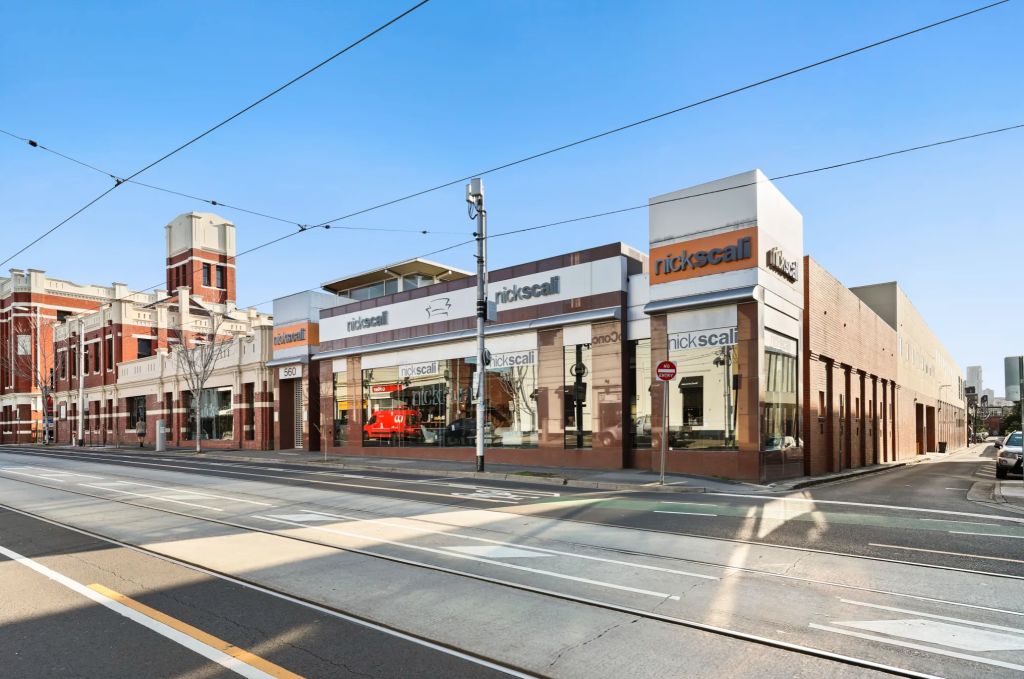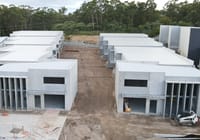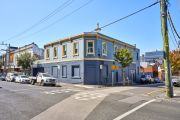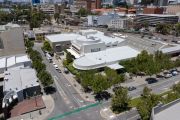
Supersized Cremorne site to kick off post-lockdown transactions
Former Porsche dealer Alan Hamilton is selling part of the historic Bryant & May match factory, a supersized development site in Cremorne that will kick off a round of post-lockdown transactions.
One of the largest single land holdings on Melbourne’s city fringe, the property will catch the attention of developers and investors focused on the once a run-down industrial suburb, which is now the beating heart of a warehouse-led city-fringe office revival.
The 9715 square metre complex includes portions of heritage-listed red-brick factory, notably the former dining hall, chimney stack, boiler room and an ornate two storey structure facing Church Street.
The island site is currently leased to gym operator Fitness First and furniture store Nick Scali with an estimated fully let net income of $2.4 million.
Mr Hamilton last put the site on the market in 2008 for about $26 million, but it didn’t sell. This time around, it’s expected to fetch much, much more, above $80 million.
Dawkins Occhiuto agents Andrew Dawkins, Tim Grant and Walter Occhiuto are managing the sale along with Charter Keck Cramer as transaction adviser.
Mr Dawkins said the site has significant potential for a major redevelopment.
“We expect a site like this to create quite a stir in development circles based on its history, the all-around accessibility to a very large site, the flexible zoning and the significant income stream,” he said.
The property is bounded by Church, Chestnut and Adelaide streets, and the privately owned Russell Street to the south.
Mr Hamiliton’s father, Norman, a former racing car driver, purchased the block in the late 1980s as a base for Hamilton Porsche business, having set up as one of the first Porsche suppliers to Australia in the early 1950s.
Mr Dawkins said the site, in a section of Church Street dominated by new-build offices, was likely to be turned into a mixed-use office complex.
Cremorne is attracting a growing stable of ASX-listed, tech-focused companies like Seek, MYOB, REA Group, Carsales and Domain.
The suburb’s popularity has also spread to nearby Richmond.
Australia Post recently announced it will set up a flagship headquarters in the now-thoroughly gentrified suburb, occupying a yet-to-be-built office in a Swan Street to be constructed by Charter Hall in a joint venture with the Agosta family.
Other vendors are also looking to capitalise on the desire of office tenants to decentralise their pandemic-hit staff out of the CBD and provide workplaces closer to employees’ homes.
Family-owned developer Roche Holdings is divesting a seven-level office at 2-6 Gwynne Street in Cremorne.
The building, which is near fully leased, is expected to fetch around $40 million. “The family felt the timing was right to sell this asset in a market starved of good quality investment offerings,” Nick Roche said.
Colliers’ Peter Bremner, Rachael Clohesy and Alex Browne along with Teska Carson’s Adrian Boutsakis and Luke Bisset are handling the sale.
Mr Bremner said the Roche’s were buoyed by the recent sale of a newly completed office at 45 Wangaratta Street, which fetched a market-leading rate of nearly $13,500 per sq m.
Yields in prime city fringe markets like Cremorne are now below 5 per cent and there is considerable pent-up demand for buildings below $50 million. “We anticipate strong interest from private investors, syndicates, institutions and offshore groups,” he said.
Mr Bremner and Real Properties’ Joe Catanese are also involved dealing with in another slice of Richmond’s industrial history at 45 Gibdon Street, where the Burnley Malting site is for sale.
Built as a brewery in the 1890s and most recently operated as a barley processing facility and malting plant, the 3568 square metre corner site, once it sells, is more likely to be converted into townhouses or apartments because of its location in a residential zone.











